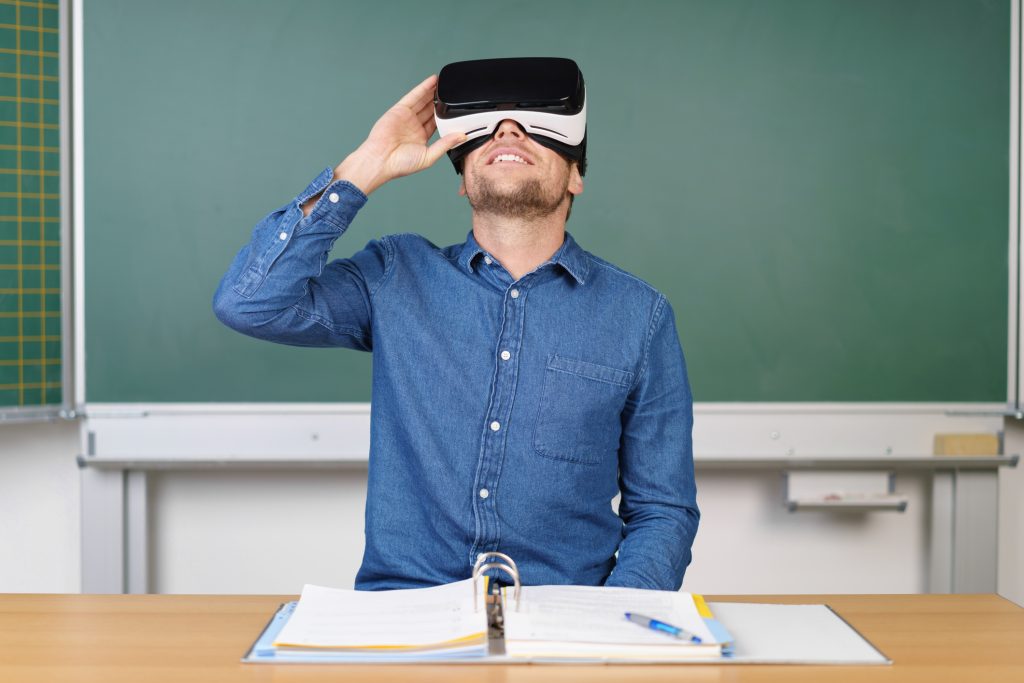In my four years in higher education, I have observed more than two dozen pre-service teachers in their student teaching experience. As I completed my student teaching in 1999, it’s been a while since I’ve looked out from the front of a classroom at the eager faces of students hanging on my every word while my professor smiled and nodded, offering a thumbs up (just kidding–you know it didn’t go like that). Now, while sitting in the back of that pre-service teacher’s classroom – smiling, nodding, and giving the thumbs up, of course – time and again I see Bobby with his head on his desk, tired from a long night of online gaming, Jenny looking down at her lap as she texts her best friend across the room, and Johnny playing Fortnite instead of following along with the slide show. In some ways, I am so glad I didn’t have to deal with the same degree of technology as today’s fresh-faced, pre-service teachers. I began to wonder, what do these pre-service teachers see from the front of the room?
You might suspect this is an anti-technology post, but you’d be wrong. I embrace technology, when it is put to good use, and encourage teachers to capitalize on all that it has to offer. Instead, I’d like to suggest a possible way to boost your own critical self-reflection using two tech gadgets: 360 cameras and VR headsets.
AMLE’s Middle Level Teacher Preparation Standards ask that pre-service teachers learn to critically reflect (Component 5.a.) and use technology in a way that supports professional competence (Component 5.d.). With the use of 360 cameras and VR headsets, pre-service teachers, early career educators, veteran teachers, and administrators can look at their teaching from a whole new perspective.
I am currently conducting a research study analyzing differences between pre-service teachers’ initial thoughts of their classroom management, teaching and engagement strategies, and communication after teaching an observed lesson compared to their perceptions of these elements after watching a regular “flat” and then a 360 video using a VR headset of that same lesson. The 360 camera, mounted on a tripod in the middle of the room, catches the entirety of the classroom no matter where the pre-service teacher is. In other words, it is the all-seeing eye. It has been fascinating to see the evolution in reflection, self efficacy, and how the pre-service teacher performs in the next observed lesson. While the results of the study are not yet final, initial conversations with participants indicate that 360 videos with the combined use of VR headsets create an environment ripe for self-assessment and professional learning.
According to one participant:
Anytime I watch myself teach it is a little unnerving but I feel that with the headset I was able to focus on the students far more than with the flat video. Often watching myself on the flat video, I cringe but I knew going into this 360 video platform I would be more focused on the students. I think that by watching the 360 after watching the flat I was able to garner more about how the students were engaging/not engaging with the overall lesson. I did end up changing a couple of the ratings I gave myself…I feel that I was more forgiving the third time I completed the survey. I think the reason I was more forgiving after watching with the headset is because I felt that I was able to catch the students attention better than I thought I had.
I know it is hard to watch yourself on video. I, too, cringe whenever I see myself on screen. I also know video is a powerful tool in self-reflection. In 2002, I began my journey to National Board certification, part of which was analyzing videos of my teaching. While the whole process of certification forever changed the way I thought about teaching and learning, in particular watching myself teach and the students engage (or not) gave me clarity and motivation to improve–to try new things.
By using 360 video, we get a much better view of what is happening around the entire classroom, seeing what worked and didn’t work with all students. It helps us see Bobby, Jenny, and Johnny more clearly and figure out how to engage them in the lesson. 360 video, and the ability to watch in 3-D with a VR headset, could be transformative in seeing the bigger picture of how we teach, engage learners, communicate, and manage a classroom.
Heather Stefanski, Ed.D., is an Assistant Professor to Teaching and Educational Leadership at Arkansas Tech University. Heather also serves as Chair of the AMLE Early Career Educators Committee.
